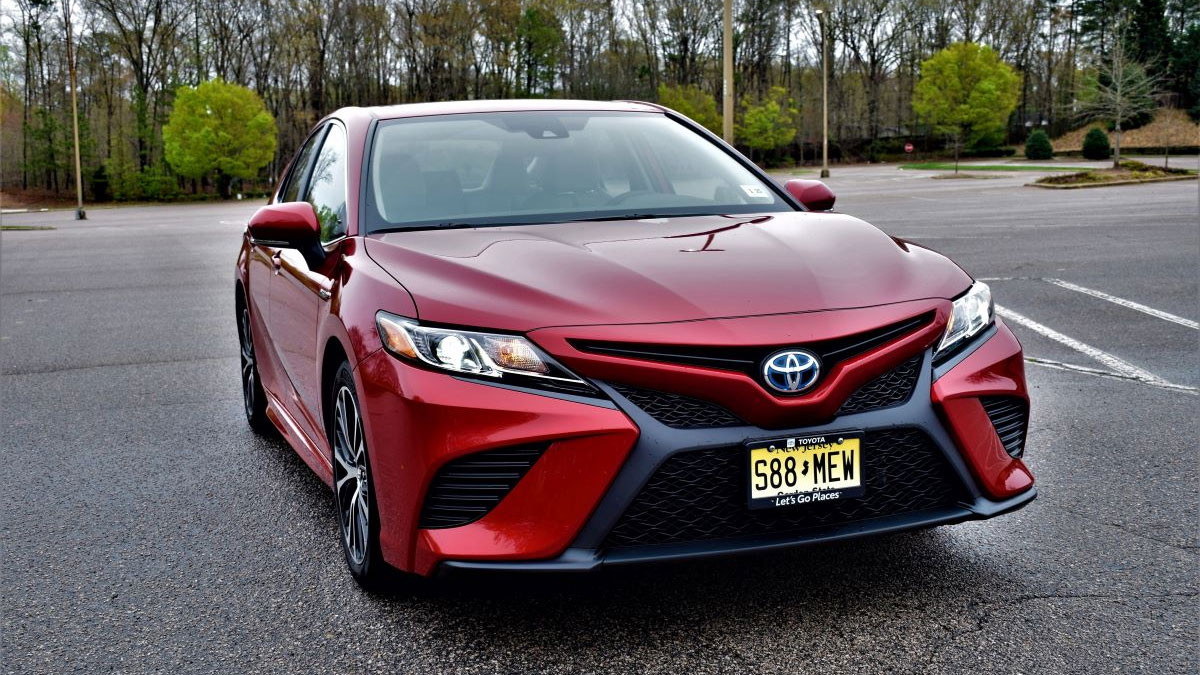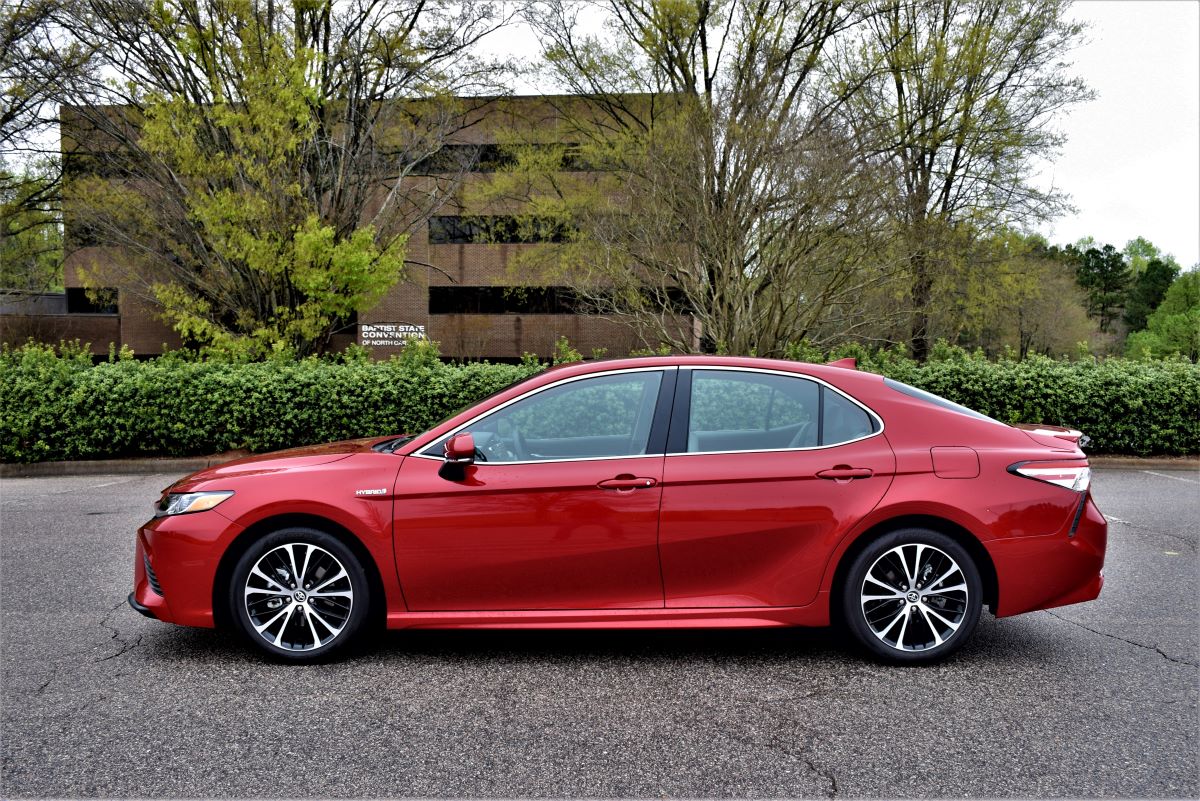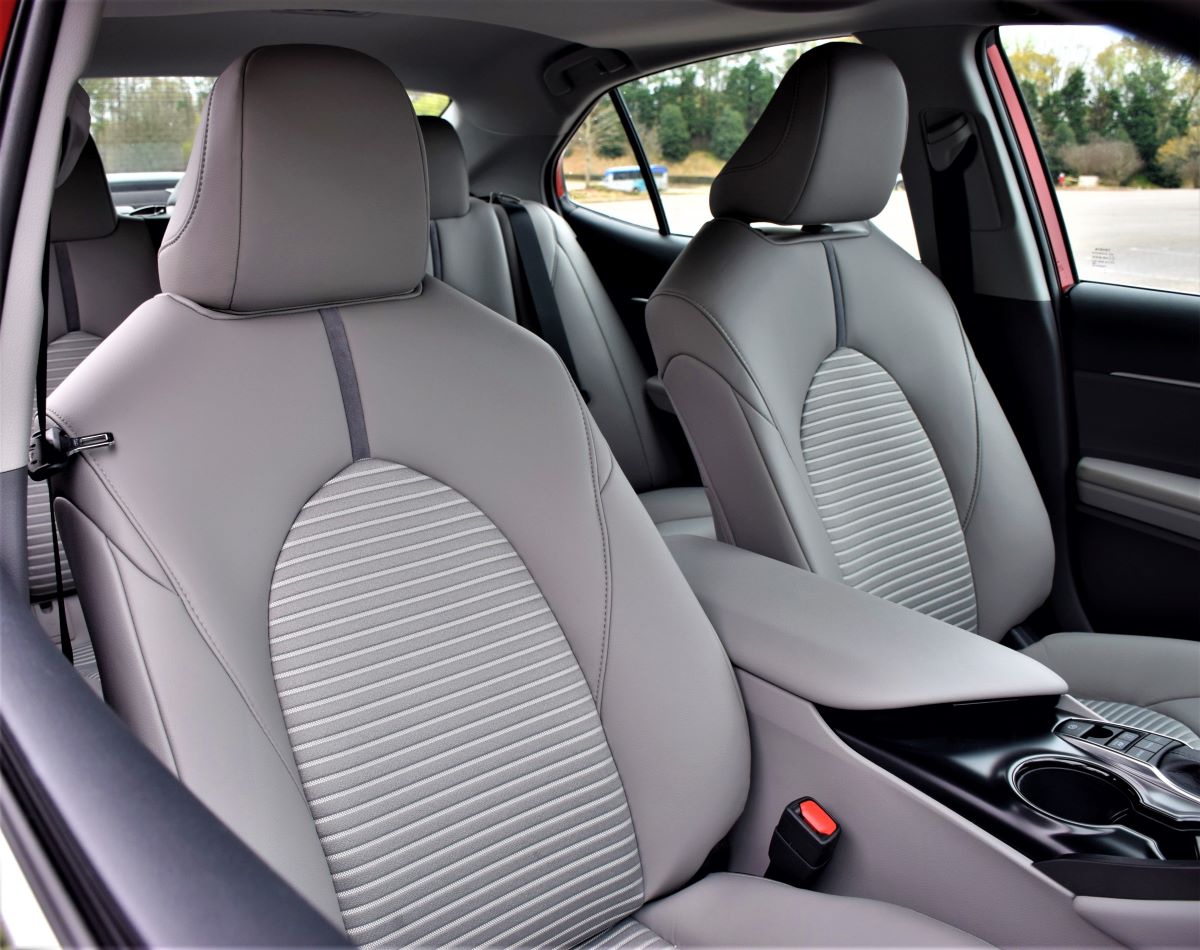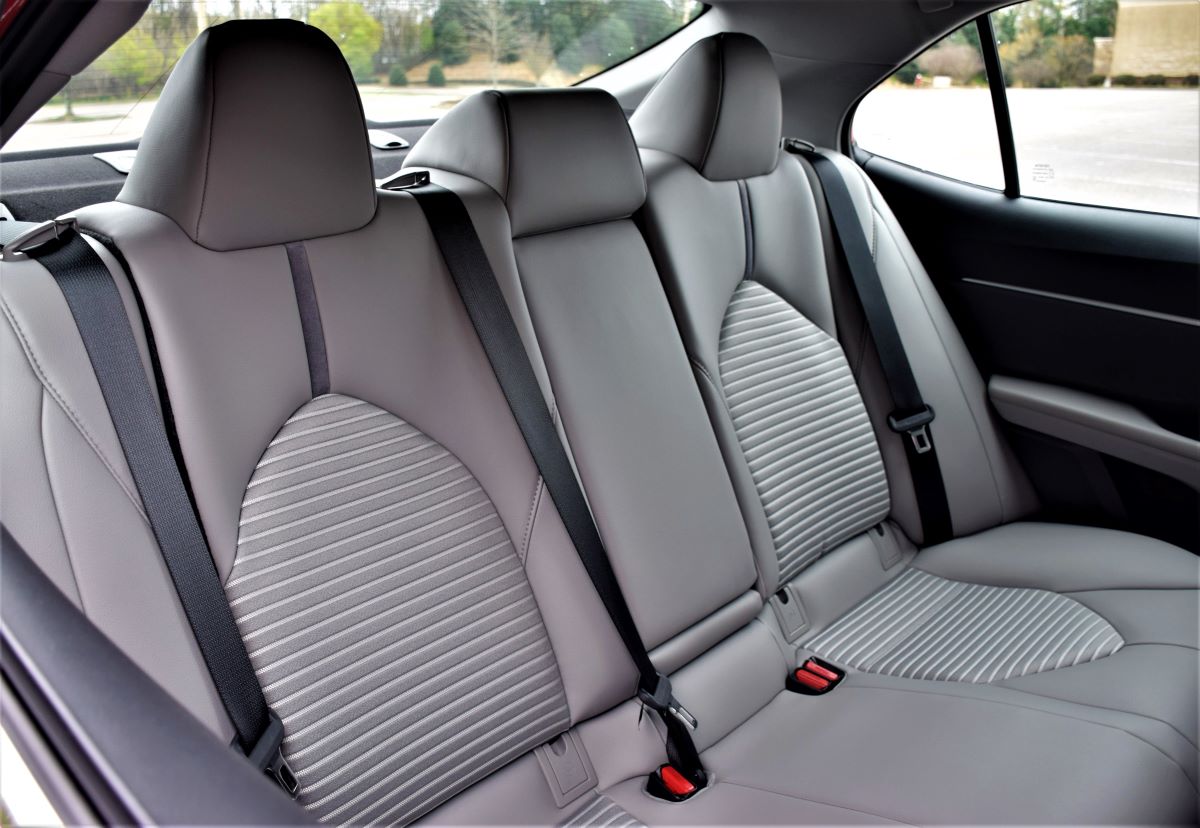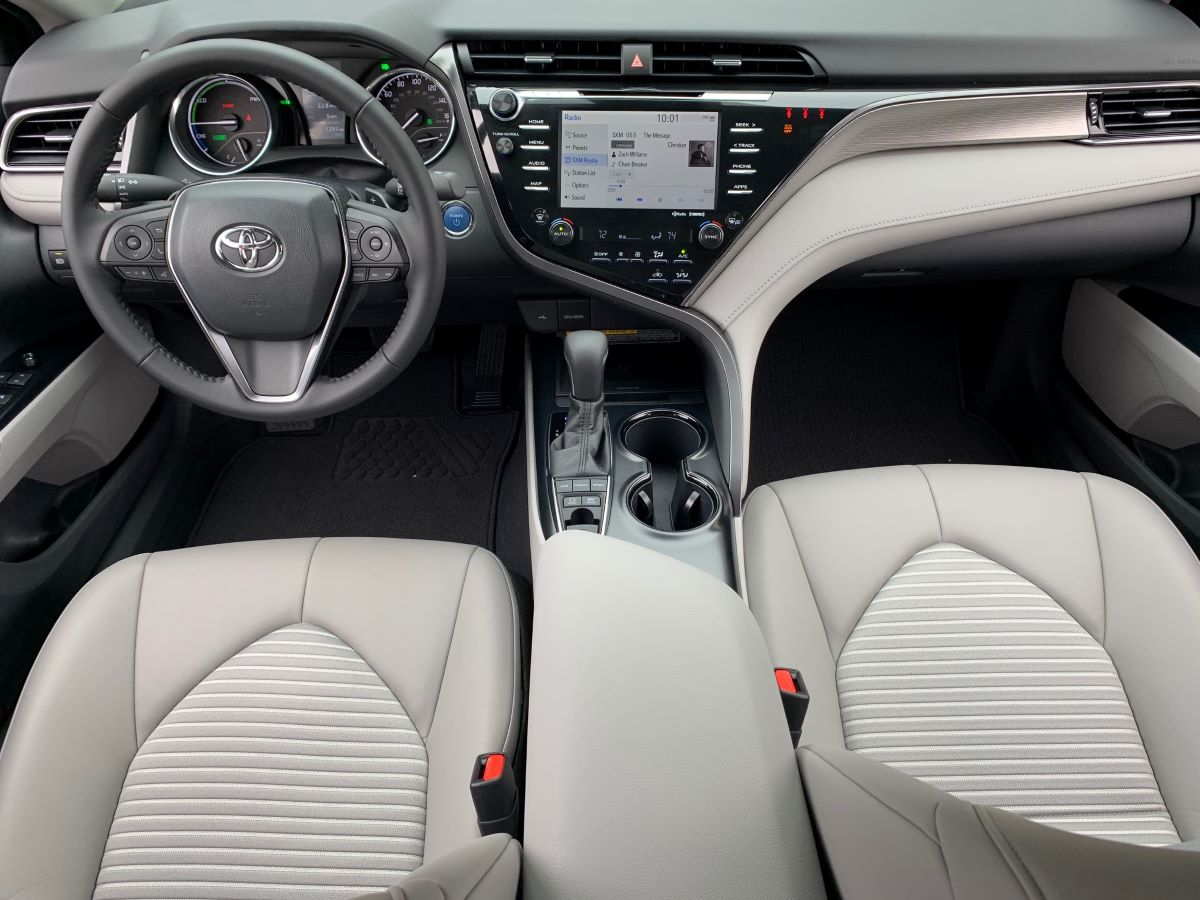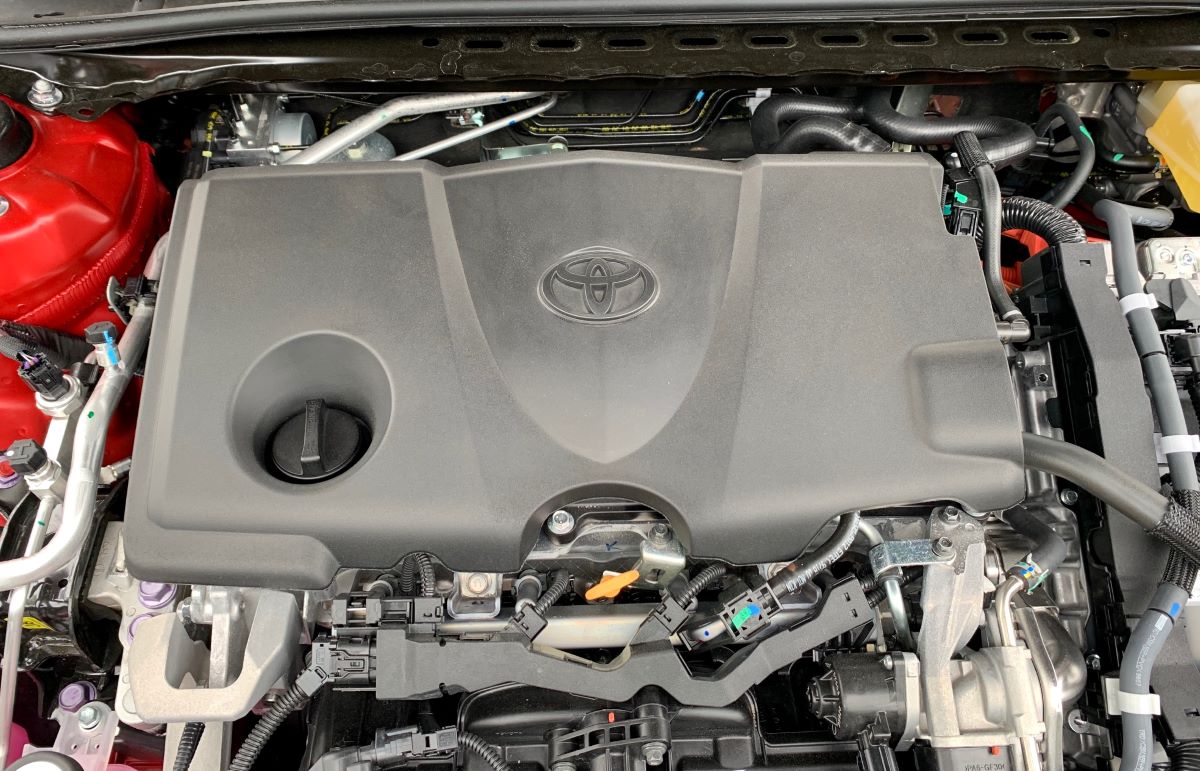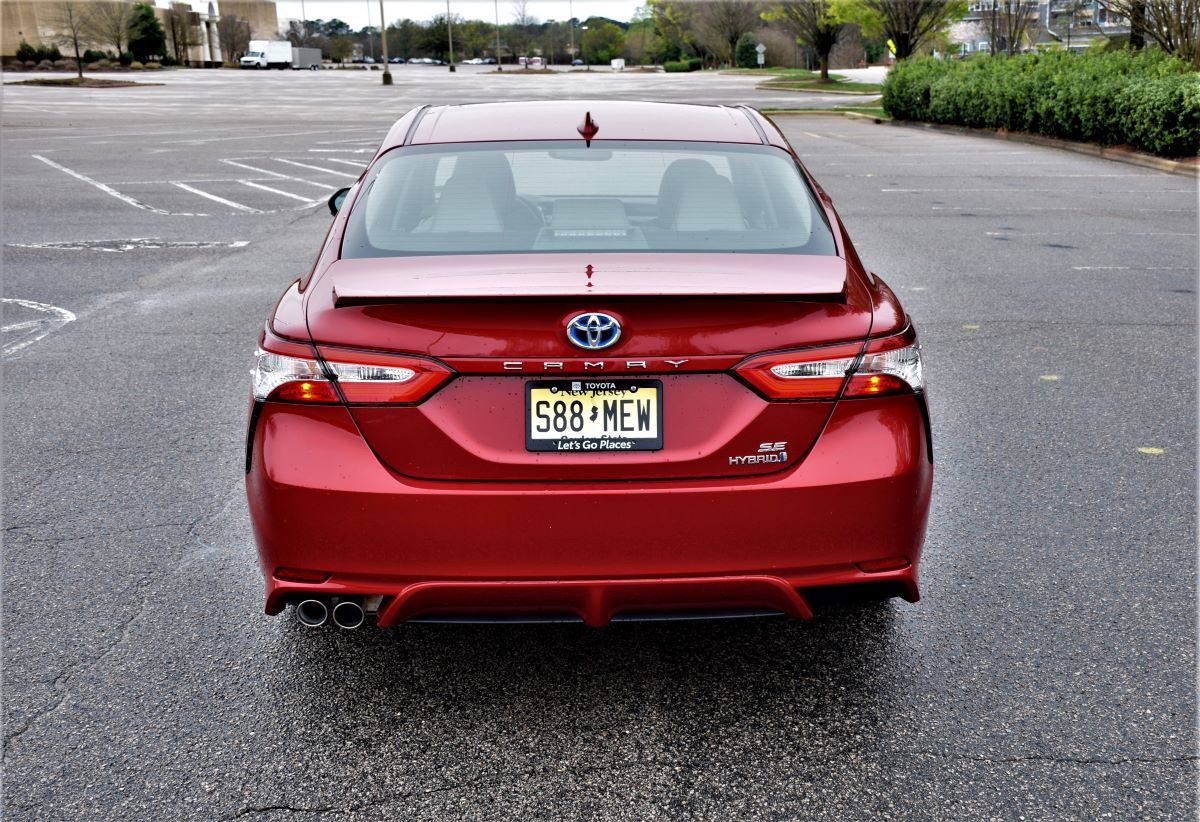Hybrid models have evolved over the years. The first models were bulbous vehicles designed to minimize airflow and maximize fuel economy. Indeed, the Toyota Prius and first-generation Honda Insight were perhaps the best representations of what gas-electric hybridization could do.
Along the way, industry leader Toyota applied its “hybrid synergy drivetrain” technology (currently known as Toyota Hybrid System or THS-II) to more models, while avoiding many of the styling idiosyncrasies peculiar to them, including overt grille shutters, integrated side mirrors, and aerodynamically designed wheels.
Although aerodynamic features are in place and remain important, they’re typically part of the entire model line, not just the hybrid.
2020 Toyota Camry Hybrid Review
The 2020 Toyota Camry Hybrid is an excellent example of a gas-electric model that looks a lot like its standard version. Badging differentiation is the most significant differentiator between the two, otherwise, they’re nearly identical.
Released in 2018, the current-generation Camry family remains a front-wheel-drive midsize sedan with room for five.
Toyota offers the Camry Hybrid in LE ($28,430), SE ($30,130), and XLE ($32,730) trims. Add $945 for the destination charge.
Exterior
The Camry Hybrid offers a sporty design with a small upper grille and a large lower intake. Narrow headlights, distinct LED accent lighting, sweeping character lines, pronounced body sculpting, a floating roof, and a notched rear end are a few of this model’s design highlights.
Among the standard features are 16-inch steel wheels, LED lighting, and a single exhaust system. The SE adds a sport mesh insert to the grille, 18-inch aluminum-alloy wheels, a rear spoiler, and a single exhaust with two outlets. Choose the XLE and this trim has chrome embellishments, heated side mirrors, and a bright metallic grille.
Interior
The Camry offers a roomy interior with space for five adults. The front seating area supplies excellent legroom, but not at the expense of the rear seat. Indeed, we found the rear split-folding seat offers some of the best legroom for any sedan, even some larger models.
That said, the sloping rear roof means you must tilt your head down to avoid hitting the door frame while entering. The trunk measures 15.1 cubic feet and that’s average for the segment.
Among the standard features are full power accessories, dual-zone climate control, cloth seats, wood trim, and soft-touch materials. The list of upgrades includes NuLuxe (imitation leather) and real leather seats, power front seats, heated front seats, a power tilt and slide moon roof, an automatic dimming rearview mirror, and adjustable rear headrests.
Technology
Toyota equips the Camry Hybrid with a six-speaker audio system and a 7-inch touch-screen display. This model also has Bluetooth, Apple CarPlay and Android Auto smartphone compatibility, Amazon Alexa, USB input and chargers, and satellite radio.
The XLE trim features an 8-inch touch-screen display. Toyota adds HD Radio, a CD player, and wireless technology. Also available is a 9-speaker audio system, a color head-up display, additional charge ports, and navigation.
Safety
Toyota gets it right in terms of safety features. All models come with Toyota Safety Sense P (TSS-P). This package includes automatic high beams, a pre-collision system with pedestrian detection, lane departure alert with steering assist, and full-speed range dynamic radar cruise control.
The top-trim XLE comes with blind-spot monitoring with rear-cross traffic alert.
The available Driver Assist Package with the XLE trim includes adaptive headlights with automatic leveling. It also includes a bird’s eye view camera and rear cross-traffic braking.
Performance
The Toyota Camry Hybrid is all about fuel savings, but don’t poo-poo its performance numbers. Indeed, it shares the same four-cylinder engine as the base model, although it’s tuned to deliver 176 horsepower and 163 pound-feet of torque (compared to the 203 hp and 184 lb.-ft. for the standard Camry).
Under full throttle, however, the hybrid reaches its top performance, as the electric motor and engine combine to deliver 208 horsepower. Power routes to the front wheels utilizing a continuously variable transmission.
On the other hand, the gas model shifts power to the same wheels with an 8-speed automatic transmission. A second electric motor helps replenish the hybrid battery.
Toyota’s hybrid technology has advanced over the past two decades and it shows. The system is more efficient and they’ve squeezed additional power out of them. If you thought hybrids were laggards in performance at the expense of fuel economy, you’ll be happy to know that’s not the case.
Indeed, the EPA rates the base model at a stunning 51 mpg city, 53 mpg highway, for a combined 52 mpg. Choose the SE or XLE trims and the numbers are 44/47/46 mpg city/highway/combined.
See Also – High Efficiency: 2020 Hyundai Sonata Hybrid
We spent the week driving the Camry Hybrid chiefly on back roads and county lanes, with highway speeds the norm. A hard press of the accelerator and the sedan lights up. By no means is this a performance vehicle as the steering is light, handling is choppy at times, and cornering matches what you’d expect from any sizable front-wheel-drive car.
But we were thrilled to earn 43.3 mpg while covering 250 miles, knowing also that we had idled the car for several minutes here and there to enjoy the cooling air conditioner on one unseasonably warm March afternoon.
We operated the hybrid in the eco mode most times but shifted to sport on occasion to see how it behaved. We didn’t notice much of a difference, so normal or eco mode should do. A fourth mode, EV, is useful for cruising parking lots as you look for an empty space.
In all, the Toyota Camry Hybrid is just as powerful as nearly any naturally aspirated four-cylinder engine in its class. That it delivers a combined fuel economy edge of at least 15 mpg is something to keep in mind when considering this sedan.
Competitive Set
The number of hybrid variants available in the midsize sedan arena continues to shrink as manufacturers abandon the segment. For instance, the Ford Fusion Hybrid and the standard model are gone and likely the Chevrolet Malibu Hybrid will soon follow. Also, you can no longer purchase a Nissan Altima Hybrid.
As for the remaining models, you’ll find the Honda Insight, Honda Accord Hybrid, Kia Optima Hybrid, and the Hyundai Sonata Hybrid.
Our Recommendation
We think the Camry Hybrid in any form is a terrific choice. The standard LE has the fuel economy edge, but you’re limited by the number of upgrades you can choose. Indeed, this trim along with the SE, do not offer packages.
The XLE supplies both the navigation/moonroof package ($2,670) and the driver-assist package ($5,460), which builds on the first.
All told, a fully loaded Camry Hybrid may cost you just over $39,000 and that’s within the range of comparably equipped standard midsize models.
2020 Toyota Camry Hybrid Specifications
| 2020 Toyota Camry Hybrid | |
|---|---|
| Segment | Midsize Hybrid Sedan |
| Price Range | $28,430 to $32,730 |
| Destination Charge | $945 |
| Standard Engine | 2.5-liter, inline-four |
| Transmission | Continuously variable |
| Horsepower | 176 @ 5,700 RPMs |
| Torque (lb.-ft.) | 163 @ 5,200 RPMs |
| Seating | 2+3 |
| Curb Weight (pounds) | 3,472 to 3,572 |
| Wheelbase (inches) | 111.2 |
| Length (inches) | 192.1 or 192.7 |
| Width (inches) | 72.4 |
| Height (inches) | 56.9 |
| Head room (f,r — inches) | 38.3, 37.6 |
| Leg room (f,r — inches) | 42.1, 38.0 |
| Shoulder room (f,r — inches) | 57.7, 55.7 |
| Hip room (f,r — inches) | 55.4, 54.6 |
| Storage (cubic feet) | 15.1 |
| Gross vehicle weight (pounds) | NR |
| Towing (pounds) | NR |
| Payload (pounds) | NR |
| Fuel | regular |
| Fuel Tank (gallons) | 13.2 |
| EPA Fuel MPG (city/highway/combined) | 51/53/52 (LE); 44/47/46 (others) |
| Manufacturing Plant | Georgetown, Kentucky |
See Also – All-New 2018 Toyota Camry Hybrid Tops 50 MPG
Photos copyright Auto Trends Magazine. All rights reserved.
- 2024 Mazda CX-50: A Compact SUV with Premium Aspirations - Apr 15, 2024
- 2024 Ford Mustang (Iconic Pony Car Evolves) - Apr 4, 2024
- 2024 Ford Maverick (Looks Like a Truck, Drives Like a Car) - Mar 28, 2024

